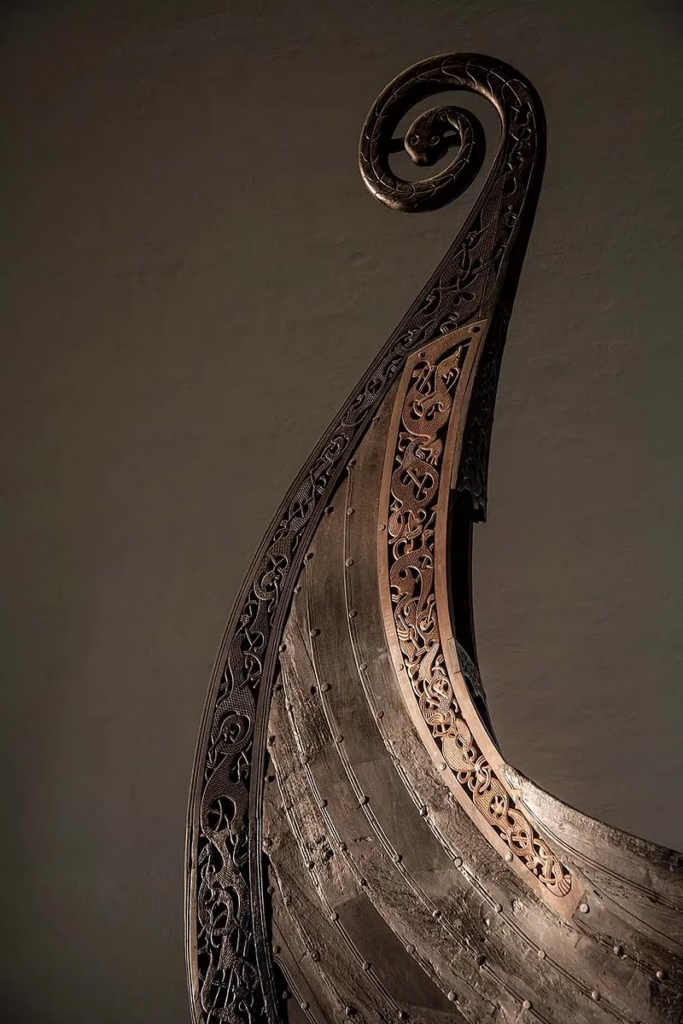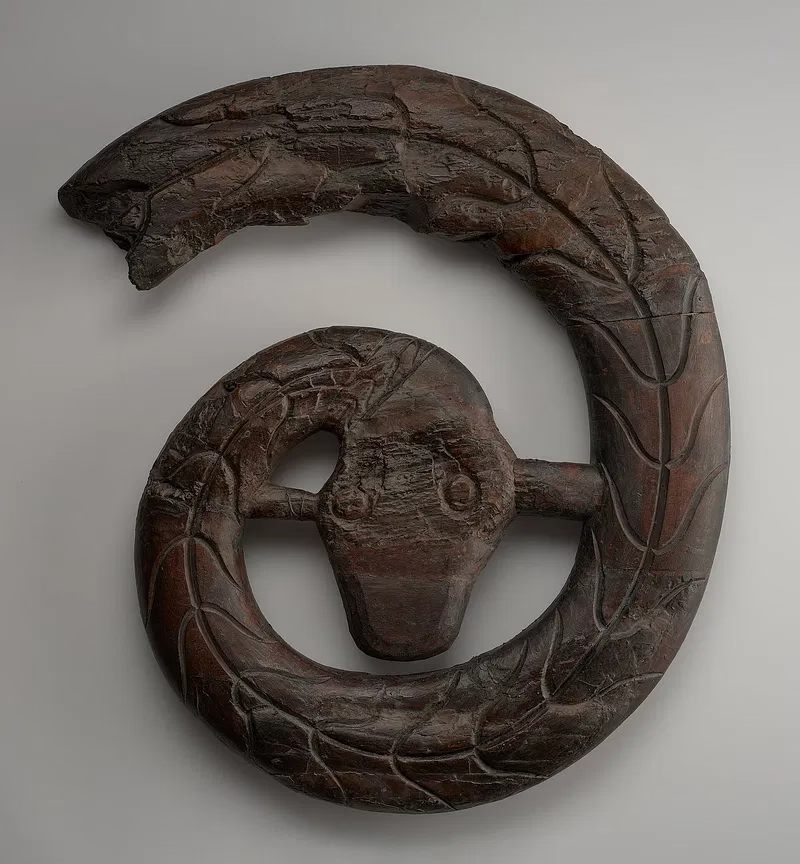In Oslo, Norway, one of the most significant artifacts from the Viking Age—the original serpent head from the Oseberg Ship—is being unveiled to the public for the first time since its discovery in 1904.
Carved over a thousand years ago, this delicate wooden figure was deemed too fragile to display during the ship’s excavation. Until now, visitors to the Viking Ship Museum have only seen a precise replica. The original piece will now be exhibited at the Historical Museum in Oslo and will become a permanent highlight of the new Viking Age Museum set to open in 2027.
Jan Bill, archaeology professor and curator of the Viking ship collection, states, “It is one of the finest artifacts from Norway’s Viking Age. Being able to show it to the public is truly wonderful.”
The Best-Preserved Viking Ship in the World
Built around 820 AD, the Oseberg Ship is a massive vessel measuring 21.5 meters long and 5 meters wide. With 15 oar holes on each side, it was manned by a full crew of 30 rowers. In 834 AD, the ship was pulled ashore and used as a burial ship for two high-status women, who were laid to rest along with valuable grave goods.

During the 1904 excavation, approximately 90% of the original wood was remarkably preserved. Alongside the ship, archaeologists uncovered kitchen utensils, farming tools, ceremonial wooden objects, and a beautifully carved cart—providing an unparalleled glimpse into Viking craftsmanship and daily life.
The Serpent Head’s Extraordinary Story
According to museum curator Hanne Lovise Aannestad, “Like many Viking graves, the Oseberg burial was robbed around 970 AD in what is known as ‘haugbrott’. The robbers cut off the serpent head and threw it into the soil layer at the grave’s entrance. That is why this serpent head survives today.”
Ironically, it is thanks to these ancient grave robbers that the artifact has been preserved.
A Star Exhibit in a New Viking Exhibition
The serpent head will be the centerpiece of the upcoming exhibition titled Miðgarðr – The Mythical World of the Vikings, opening June 21 at the Historical Museum in Oslo. The exhibition is designed especially for children aged 8 to 12 and explores Norse mythology through interactive displays and storytelling.

Researchers believe the Oseberg serpent head might have been designed to be detachable. A 12th-century Icelandic law required ships to remove figureheads when approaching land, so as not to disturb local spirits. The Bayeux Tapestry, depicting the 1066 Norman invasion of England, also shows serpent-headed ships at sea but not when approaching shore.
A Viking Legacy Reunited
More than a thousand years after it was carved—and after being removed and discarded—the iconic serpent head is finally recognized as a national treasure of the Viking Age. When the new Viking Age Museum opens in 2027, it will be reunited with the ship it once adorned, bringing the legend fully back to life.
Cover Image Credit: Historical Museum/University of Oslo





